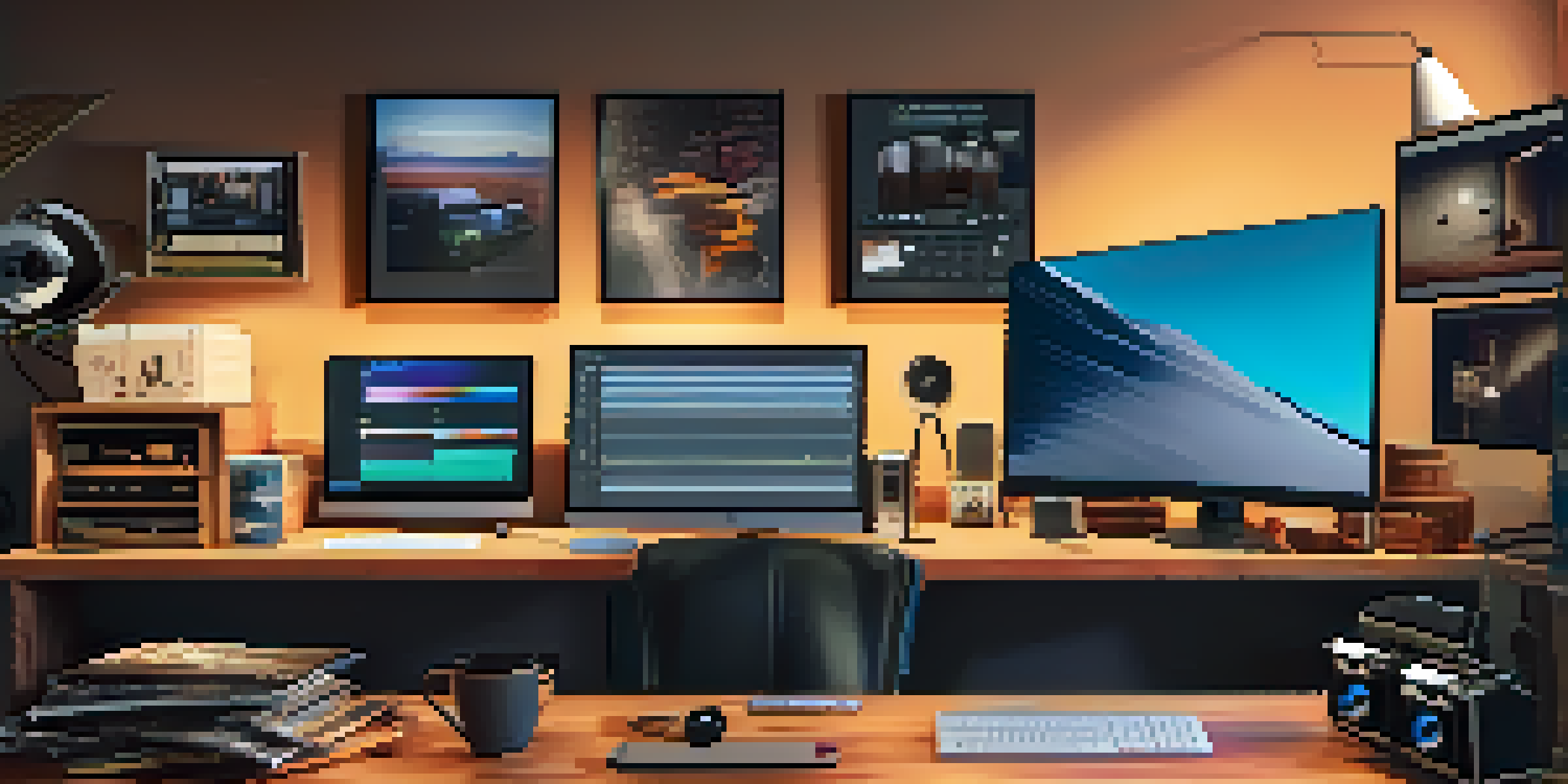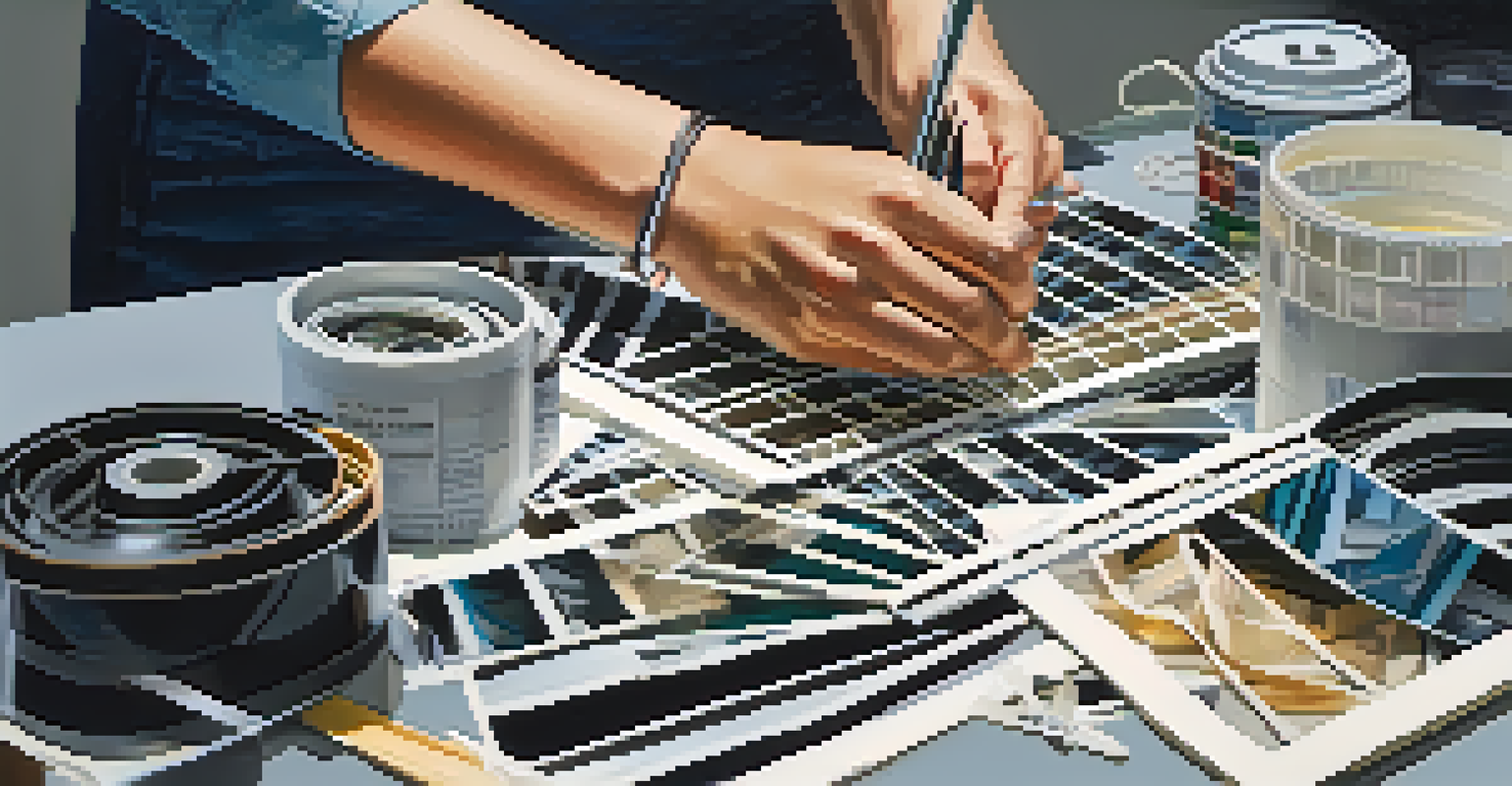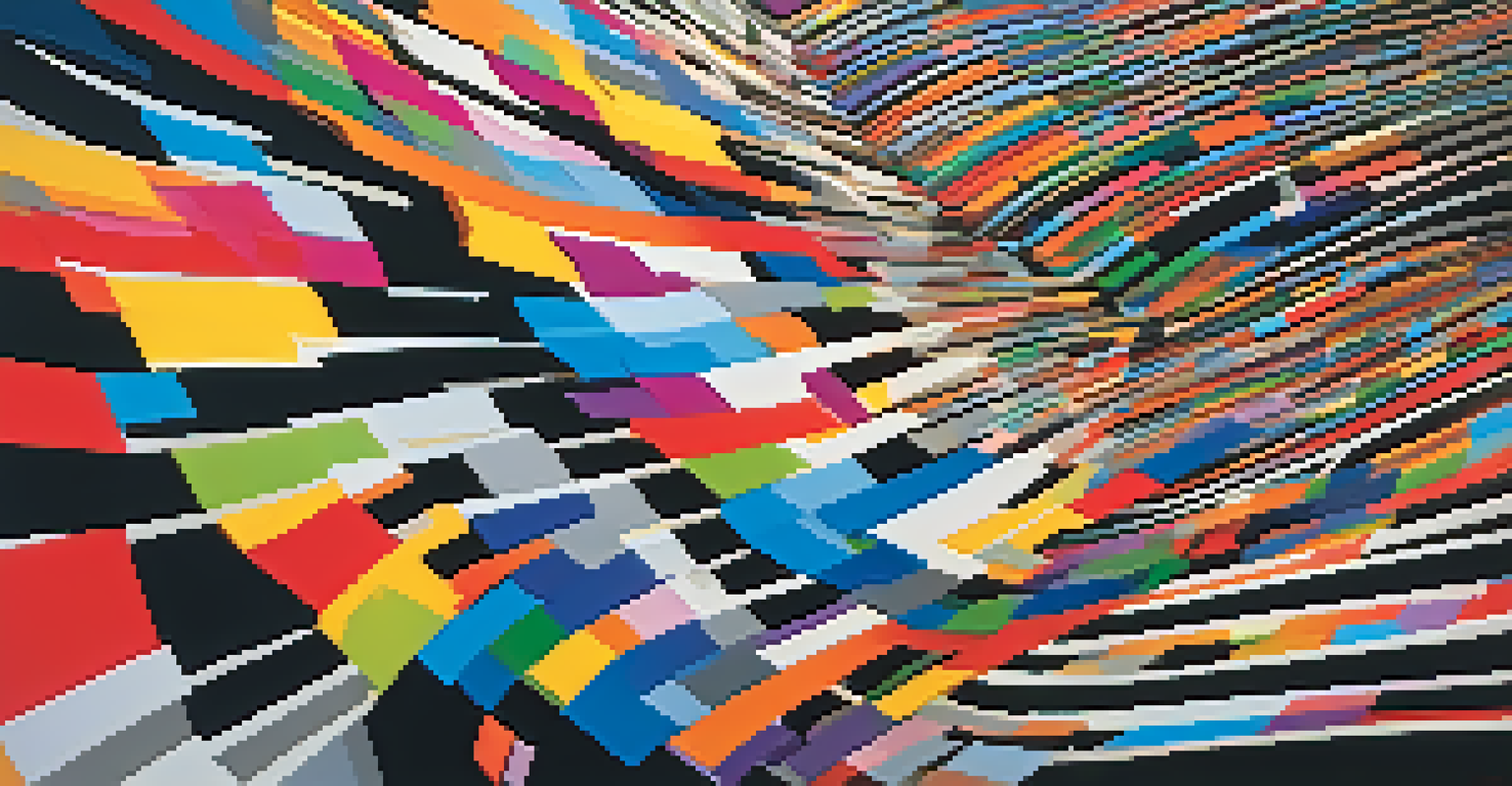Understanding the Fundamentals of Film Editing Techniques

What is Film Editing and Why It Matters
Film editing is the process of selecting and combining shots to create a cohesive story. It plays a crucial role in shaping how a film is perceived, guiding the audience’s emotional journey. Think of editing as the backbone of storytelling; without it, a film can feel disjointed and confusing.
Editing is the art of making choices, and those choices are what ultimately define the film.
By skillfully piecing together scenes, editors can manipulate time, pacing, and even the viewer's perspective. For example, a quick cut can heighten tension, while a longer take can immerse viewers in a moment. The choices made during editing can make or break the film's overall impact.
Ultimately, effective film editing is about more than just cutting footage; it’s about enhancing the narrative and ensuring that the audience remains engaged from start to finish.
The Importance of Continuity in Editing
Continuity editing is a technique that maintains a consistent narrative flow, ensuring that the story unfolds logically. It helps the audience follow the action without confusion, creating a seamless experience. Imagine watching a conversation where suddenly the characters are in different locations without explanation; continuity editing prevents such jarring moments.

Editors use various methods, such as matching action and eye-line matching, to achieve continuity. This means ensuring that when a character looks off-screen, the next shot should show what they are looking at. Such attention to detail can significantly enhance the viewer's immersion in the story.
Film Editing Shapes Storytelling
Film editing is crucial for creating a cohesive narrative and guiding the audience's emotional journey.
In short, continuity is essential for maintaining coherence in a film. It allows viewers to focus on the story without getting distracted by inconsistencies.
Understanding Different Editing Styles
Film editing isn't one-size-fits-all; different styles can evoke various emotions and responses. For instance, a fast-paced montage can create excitement, while slow cuts can elicit introspection. Each style serves a purpose and can be strategically used to enhance storytelling.
The editor's job is to create the illusion of reality, to make the film's world believable.
Some popular editing styles include classical, montage, and experimental editing. Classical editing focuses on clarity and narrative continuity, while montage uses rapid cuts to convey complex ideas or emotions. Experimental editing, on the other hand, plays with form and structure, often challenging traditional storytelling methods.
Understanding these styles allows editors to choose the best approach for their specific project. By aligning editing techniques with the film’s tone and themes, storytellers can create a more impactful viewing experience.
The Role of Rhythm in Film Editing
Rhythm in film editing refers to the pace and flow of cuts within a scene. Just like music, editing has its own tempo, and the rhythm can greatly influence how an audience feels throughout a film. For example, a rapid rhythm can build suspense, while a slower pace may evoke sadness or reflection.
Editors achieve rhythm through careful timing of cuts, transitions, and the overall arrangement of scenes. Each shot's duration plays a vital role; too long can bore the audience, while too short can leave them confused. For instance, action scenes often benefit from faster cuts to increase adrenaline and excitement.
Continuity Ensures Narrative Flow
Continuity editing maintains a logical flow, preventing confusion and allowing viewers to focus on the story.
By mastering the rhythm of editing, editors can enhance the emotional landscape of a film, guiding viewers through the highs and lows of the narrative.
Exploring the Use of Transitions in Editing
Transitions are the techniques used to move from one shot to another and can significantly impact the storytelling process. Common transitions include cuts, fades, and dissolves, each serving a unique purpose. For example, a cut is often used for a direct shift, while a fade may suggest the passage of time or a change in mood.
The choice of transition can convey different meanings and emotional tones. Imagine a dramatic scene where a dissolve between two shots might suggest a character's internal struggle. In contrast, a quick cut might heighten tension in an action sequence.
Understanding how and when to use various transitions can elevate a film's quality, helping to create a smoother narrative flow and enhancing audience engagement.
Color Grading: Enhancing the Visual Storytelling
Color grading is an essential aspect of film editing that involves adjusting the colors and tones of the footage. This process can dramatically change the mood of a scene, making it feel warmer, cooler, or more dramatic. Think of color grading as the emotional filter that enhances the visual storytelling.
For instance, a horror film might use cooler, desaturated colors to create a sense of unease, while a romantic film might employ warmer tones to evoke feelings of love and intimacy. By strategically manipulating color, editors can guide audience emotions and reinforce the narrative.
Collaboration Enhances Creativity
The collaborative nature of film editing brings together diverse perspectives, enriching the final product.
Ultimately, color grading is not just about aesthetics; it’s a powerful tool for storytelling that can enrich the viewer's experience and deepen their connection to the film.
The Collaborative Nature of Film Editing
Film editing is inherently a collaborative process, involving directors, producers, and sometimes even sound designers. Each team member brings their vision and expertise, resulting in a richer final product. The editor's role often involves balancing these various perspectives while staying true to the film's core message.
Collaboration can also lead to creative experimentation, where different ideas are tested to see what works best. For example, directors may suggest alternative cuts, and editors can showcase various versions to find the most compelling narrative. This iterative process can lead to unique storytelling opportunities.

In essence, collaboration in film editing fosters creativity and innovation. By working together, filmmakers can craft a more engaging and impactful viewing experience.